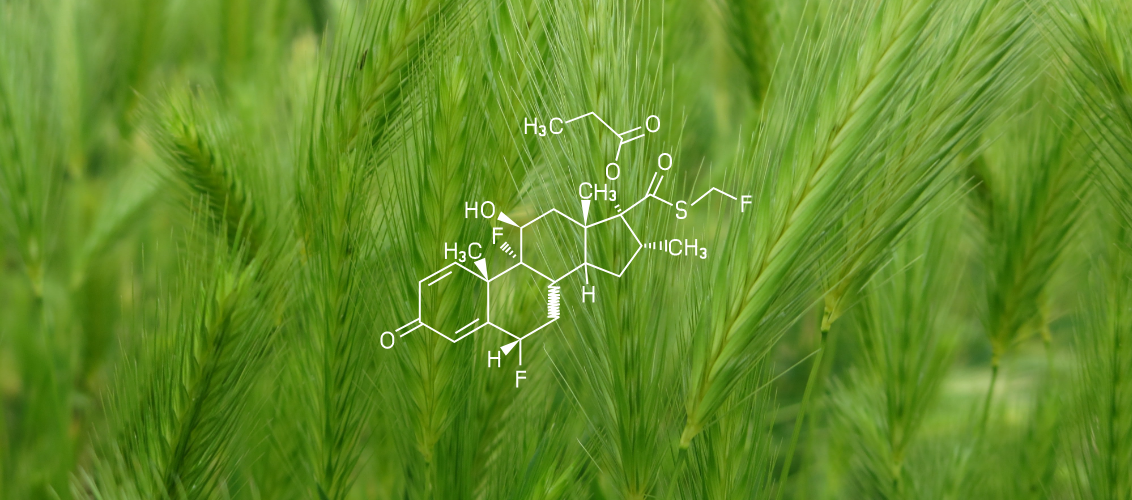
Benefits of Green Oats Super-Plant
What are Green Oats?
Green oats (Avena sativa) are annual herbaceous plants known as oat straw, common oats, or wild oats. Green oats have been used in traditional medicine to cure a whole lot of health disorders. Green oats are primarily used in India and are known for their excellent nutritional and therapeutic properties.
Traditional Uses of Green Oats
In traditional medicine, oats are used for treating insomnia, nervous exhaustion, and nervous weaknesses. Green oats tea extract is used to treat rheumatic conditions and water retention. Green oats are also used for the treatment of skin conditions such as eczema, burns etc.
Surprising facts about Green Oats
Green oats have been in existence and consumed by many people dating back to 7,000 BC.
Green oats were one of the first cereals cultivated by men, used in ancient China and Greeks for food.
Among all affordable superfoods, about 75% of Americans love green oats best.
Green oats are affordable and do not take time to cook.
Green oats happen to be one of the most consistent foods recommended to prevent heart diseases. 37 studies show that when oats are eaten every morning, they provide a lesser risk for heart diseases.
Green oats contain biotin, a B vitamin that aids a healthy metabolism and digestion, great skin, hair, and nails.
Green oats contain anti-inflammatory properties that prevent inflammation, keeping the skin supple and smooth.
Green oats contain some beneficial fibers known as beta-glucans. Beta-glucans can help to boost the immune system thereby keeping harmful bacteria far away from the body.
Green oats contain compounds that can help to regulate the blood sugar levels in the body.
Green oats originated in Asia but have been cultivated for over 2,000 years in regions worldwide. Additionally, green oats became very popular when they got to Europe.
Health benefits of Green Oats and why myAir bars contain it
1. Green oats are rich in nutrients
Green oats contain a well-balanced composition of nutrients. It is a good source of carbs and powerful fibers such as beta-glucans. Likewise, it contains more fat and protein than most grains. Green oats are loaded with essential vitamins, antioxidants, and minerals such as copper, phosphorus, manganese, iron, zinc, folate, etc. These minerals sum up to 303 calories in green oats; meaning that green oats are among the most nutrient-dense foods that one can consume.
Green oats are high in vitamins, minerals, fibers, and carbs; they are also higher in protein and fat than most other grains.
2. Green oats can reduce blood cholesterol levels and protect LDL cholesterols in the body
Many people die today as a result of heart diseases. The primary factor for heart diseases is high blood cholesterol levels in the body. Other ailments with high cholesterol levels are inflammation, tissue damage, strokes etc.
Many studies have reported that green oats contain beta-glucan fiber, which can lower the body's total and LDL cholesterol levels. Beta-glucan may increase the excretion of bile rich in cholesterol, thereby lowering the circulation of cholesterol in the body.
A study of the benefits of oats reports that green oats contain antioxidants that work with Vitamin C to prevent LDL oxidation in the body.
Many studies have proven that green oats can help lower the risk of heart disease by reducing the total and LDL cholesterol and protecting cholesterol from getting oxidized.
3. Green oats are high in antioxidants
Green oats contain a high proportion of antioxidants and plant compounds called polyphenols. The most known of these antioxidants are avenanthramides which are very much embedded in green oats.
Avenanthramides help lower blood pressure levels by increasing nitric oxide production of nitric oxide; nitric oxide helps blood vessels be dilated, thereby leading to a better blood flow. Additionally, avenanthramides also have inflammatory and anti-itching effects on the body. Ferulic acid is another beneficial antioxidant present in oats.
Green oats contain many powerful and beneficial antioxidants such as avenanthramides and ferulic acid, which help lower blood pressure and benefit the body.
4. Green oats can help to control blood sugar levels in the body
Type 2 diabetes occurs when there is a significant rise in blood sugar levels and a decrease in sensitivity to the hormone insulin in the body.
Green oats contain beta-glucans which can form a thick gel that slows down emptying of the stomach and glucose absorption in the body. The presence of beta-glucans in green oats can boost insulin sensitivity and lower blood sugar levels, especially in people who are obese or have type 2 diabetes.
The presence of beta-glucan soluble fiber in oats can boost insulin sensitivity, thereby lowering blood sugar levels in the body.
5. Green oats can help to reduce the risk of childhood asthma
Asthma is a chronic disease that is most common in kids. It is an inflammatory disorder of the tubes that carry air to and from the lungs. Not all children have the same symptoms; many experience shortness of breath, recurrent coughing and wheezing.
Many researchers believe and conclude that the early introduction of solid foods may cause an increase in the risk of developing asthma or other allergic diseases.
Nevertheless, some studies suggest that not all foods may cause such effects. But the early introduction of green oats may be protective against asthmatic symptoms.
A study of some infants feeding on oats before 6 months of age reports that the infants are at lesser risk of childhood asthma.
Based on some studies, green oats are suggested to be fed to young infants to prevent childhood asthma.
6. Green oats can help to relieve constipation in old people
Green oats can serve as a remedy for older people who often experience constipation. Often, laxatives effectively relieve constipation in older people and cause weight loss and reduced quality of life.
Some studies suggest that oat bran, the outer layer of the grain-rich fiber, may help relieve constipation in older people.
A trial on 30 elderly patients who ate a soup or dessert containing oat bran daily for 12 weeks found that the patients experienced improved well-being. About 59% of the patients were able to stop using laxatives after the 12-week study, while the total use of laxatives increased by 8% in the control group.
Studies suggest that oat bran can help lower constipation in older people, reducing the need to use laxatives.
7. Green oats can help to lose weight
Oats are a delicious and satisfying meal. Oats can be filling, and eating filling food may help consume fewer calories, leading to weight loss.
Beta-glucan can enhance the release of peptide YY (PYY); peptide YY is a hormone produced in the gut in response to eating. This hormone can reduce calorie intake, thereby reducing the risk of obesity.
Green oats can help lose weight by causing less speed at breaking down food in the stomach and increasing production of the satiety hormone peptide YY (PYY).
8. Green oats can be used for skincare products
Oats are used in the production of many skincare products.
In 2003, the FDA approved colloidal oatmeal as a skin-protective substance. But historically, oats have been in use for a long time in treating irritation and itch in various skin conditions.
Skin products that contain oats can improve symptoms of eczema. The skincare benefits pertain only to oats applied to the skin, not those that are eaten.
Finely ground oats can be used to treat skin infections. They can also help to relieve skin conditions such as eczema.
Conclusion
Green oats are herbaceous plants that are also beneficial to man. They contain properties that can help combat skin and body infections. Good news - myAir bars are packed with Green Oats!
Footnotes
Cholesterol-lowering effects of oat β-glucan: a meta-analysis of randomized controlled trials
Anne Whitehead et al. Am J Clin Nutr. 2014 Dec.
https://pubmed.ncbi.nlm.nih.gov/25411276/
Proteins in oats; their synthesis and changes during germination: a review
Christina Klose et al. Crit Rev Food Sci Nutr. 2012.
https://pubmed.ncbi.nlm.nih.gov/22530714/
Nutrition Information
https://nutritiondata.self.com/facts/cereal-grains-and-pasta/5708/2
Avenanthramides, polyphenols from oats, exhibit anti-inflammatory and anti-itch activity
Runa Sur et al. Arch Dermatol Res. 2008 Nov.
https://pubmed.ncbi.nlm.nih.gov/18461339/
Avenanthramide, a polyphenol from oats, inhibits vascular smooth muscle cell proliferation and enhances nitric oxide production
Lin Nie et al. Atherosclerosis. 2006 Jun.
https://pubmed.ncbi.nlm.nih.gov/16139284/
Oat beta-glucan reduces blood cholesterol concentration in hypercholesterolemic subjects
J T Braaten et al. Eur J Clin Nutr. 1994 Jul.
https://pubmed.ncbi.nlm.nih.gov/7956987/
Avenanthramides and phenolic acids from oats are bioavailable and act synergistically with vitamin C to enhance hamster and human LDL resistance to oxidation
Chung-Yen Chen et al. J Nutr. 2004 Jun.
https://pubmed.ncbi.nlm.nih.gov/15173412/
Modulation of the postprandial phase by beta-glucan in overweight subjects: effects on glucose and insulin kinetics
Julie-Anne Nazare et al. Mol Nutr Food Res. 2009 Mar.
https://pubmed.ncbi.nlm.nih.gov/18837470/
The Metabolic Effects of Oats Intake in Patients with Type 2 Diabetes: A Systematic Review and Meta-Analysis
Qingtao Hou et al. Nutrients. 2015.
https://pubmed.ncbi.nlm.nih.gov/26690472/
Effect of oat intake on glycaemic control and insulin sensitivity: a meta-analysis of randomised controlled trials
Lei Bao et al. Br J Nutr. 2014.
https://pubmed.ncbi.nlm.nih.gov/24787712/
The role of meal viscosity and oat β-glucan characteristics in human appetite control: a randomized crossover trial
Candida J Rebello et al. Nutr J. 2014.
https://pubmed.ncbi.nlm.nih.gov/24884934/
Increases in peptide Y-Y levels following oat beta-glucan ingestion are dose-dependent in overweight adults
Eleanor J Beck et al. Nutr Res. 2009 Oct.
https://pubmed.ncbi.nlm.nih.gov/19917449/
Colloidal oatmeal formulations and the treatment of atopic dermatitis
Joseph F Fowler Jr. J Drugs Dermatol. 2014 Oct.
https://pubmed.ncbi.nlm.nih.gov/25607551/
Global burden of asthma among children
I Asher et al. Int J Tuberc Lung Dis. 2014 Nov
https://pubmed.ncbi.nlm.nih.gov/25299857/
Food allergy and the introduction of solid foods to infants: a consensus document. Adverse Reactions to Foods Committee, American College of Allergy, Asthma and Immunology
Alessandro Fiocchi et al. Ann Allergy Asthma Immunol. 2006 Jul.
https://pubmed.ncbi.nlm.nih.gov/16892776/
Early introduction of oats associated with decreased risk of persistent asthma and early introduction of fish with decreased risk of allergic rhinitis
Suvi M Virtanen et al. Br J Nutr. 2010 Jan.
https://pubmed.ncbi.nlm.nih.gov/19674492/
Timing of infant feeding in relation to childhood asthma and allergic diseases
Bright I Nwaru et al. J Allergy Clin Immunol. 2013 Jan.
https://pubmed.ncbi.nlm.nih.gov/23182171/
Constipation in older patients: effects on quality of life
Christine Norton. Br J Nurs. 2006 Feb 23-Mar 8.
https://pubmed.ncbi.nlm.nih.gov/16603983/
The status of vitamins B6, B12, folate, and homocysteine in geriatric home residents receiving laxatives or dietary fiber
B Sturtzel et al. J Nutr Health Aging. 2010 Mar.
https://pubmed.ncbi.nlm.nih.gov/20191257/
Use of fiber instead of laxative treatment in a geriatric hospital to improve the wellbeing of seniors
B Sturtzel et al. J Nutr Health Aging. 2009 Feb.
https://pubmed.ncbi.nlm.nih.gov/19214342/
Colloidal oatmeal: history, chemistry and clinical properties
Ellen S Kurtz et al. J Drugs Dermatol. 2007 Feb.
https://pubmed.ncbi.nlm.nih.gov/17373175/
